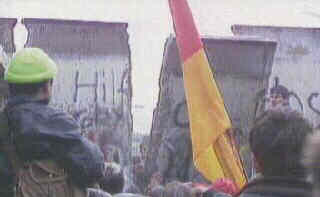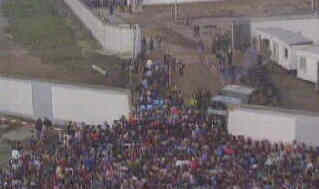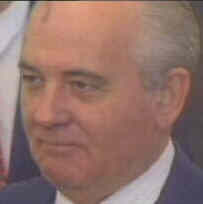The Fall of the Berlin Wall
Signalling the Collapse of Communism
The Reunification of Germany
Since the end of the Second World War, the west was involved in an ideological struggle with the communist forces of the Soviet Bloc. In Britain, MI5 was one of the key intelligence nerve centres for a battle that was always as much about hearts and minds as soldiers and spies.
On November 9th 1989, the cold war effectively ended with the collapse of communism symbolised by the fall of the Berlin Wall. The wall which, for 28 years, had separated the Soviet Bloc from the west, came down.

The moment the Wall begins to Fall
East Germany’s communist rulers allowed the gates to open after thousands of Germans, from both sides, converged at crossing points and demanded to be let through.

The Floodgates are Opened
John Sergeant, the BBC reporter, gave his views: "What it meant was that we could no longer think of people on the other side of the Berlin Wall as being different. These were people who, during the cold war, we had to assume were tough, unpleasant, totalitarian, unthinking, communists – the enemy"
The wall first appeared as a barbed wire fence in 1961. Erected by the East German government, it was intended to stem the tide of people flooding from the east to the west. The barbed wire was soon replaced with a 25 mile concrete wall with armed border guards.
For a quarter of a century, the wall stood guard on a Soviet Empire that was falling deeper and deeper into economic crisis.

Mikhail Gorbachev
When Mikhail Gorbachev took over as president in 1985, it marked the end of the old regime. Here was a man even Margaret Thatcher said she could do business with. His olive branch to the west, Glasnost, sent a shock-wave of liberalism through the Soviet Empire. Yugoslavia, Poland, Czechoslovakia and Hungary all started loosening their controls in the years leading up to the fall of the wall.
The fall of the wall, set in motion a series of momentous events for people on both sides. Within a year, East and West Germany were reunited. NATO signed a non-aggression treaty with the Warsaw Pact, signalling the formal end of the cold war. The following year, the Soviet Union was dissolved.
Many of the countries that had lain hidden behind the iron curtain were now free to apply for membership of the European Union.